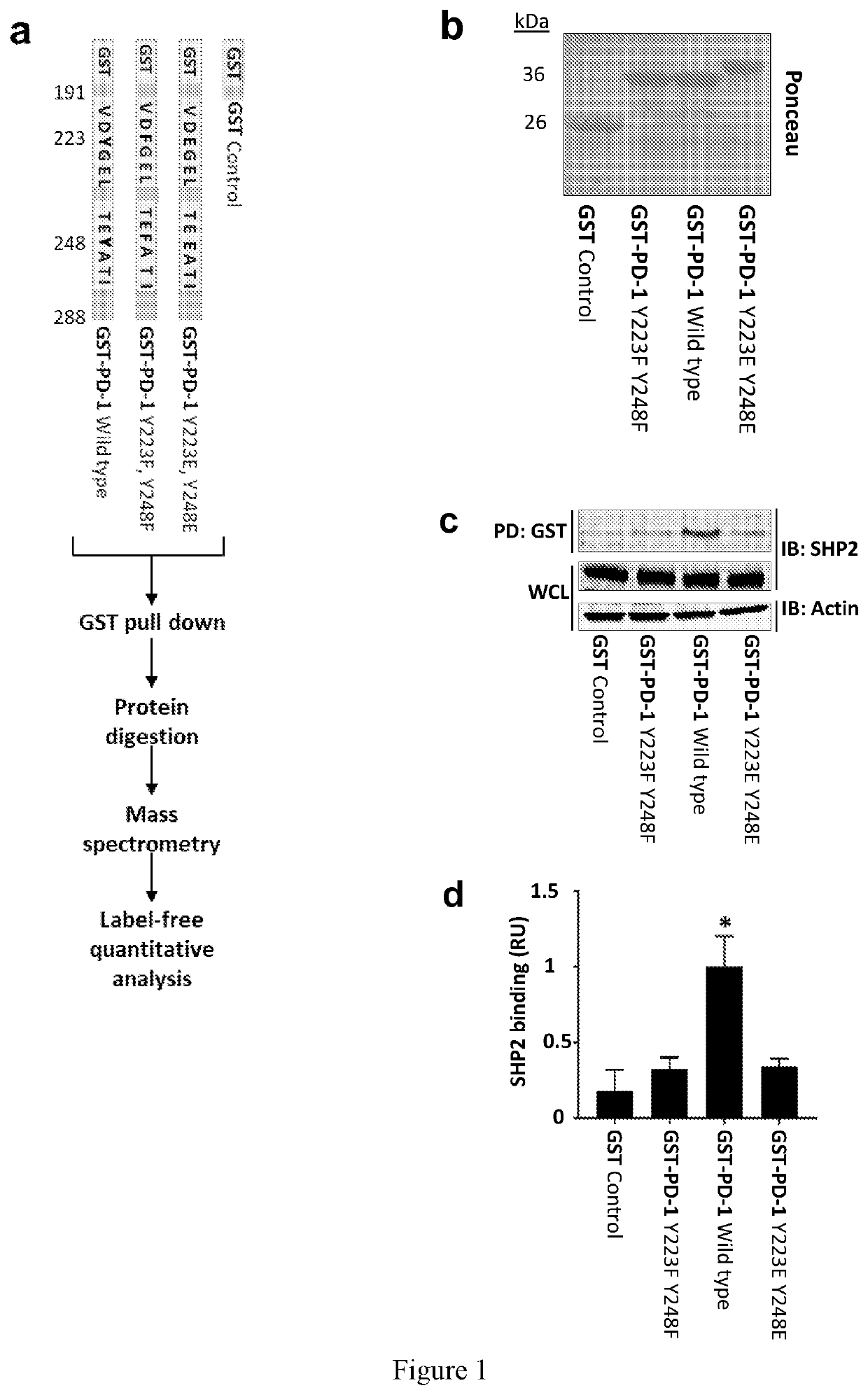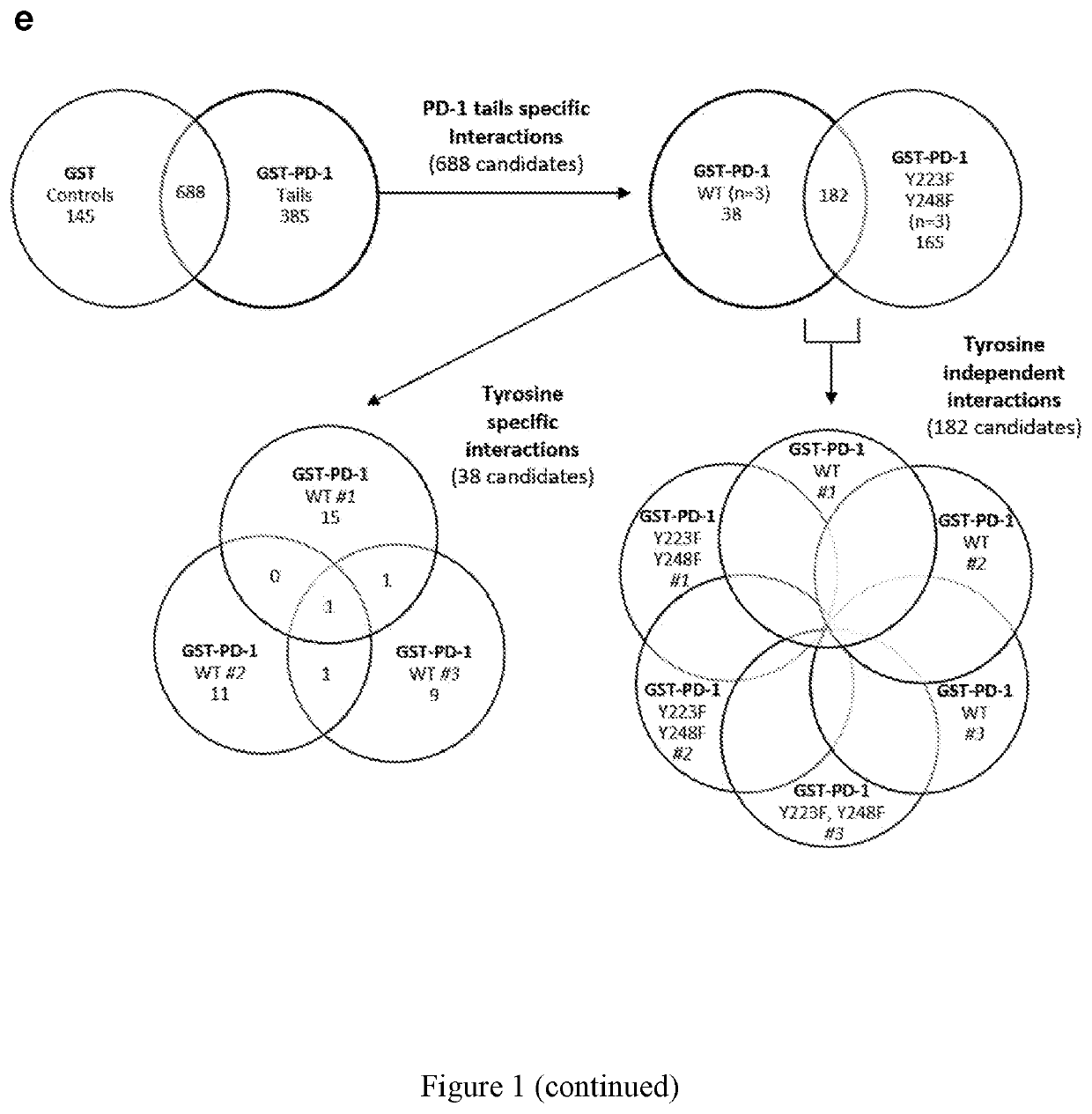Pd-1 related cancer therapy
a cancer therapy and pd-1 technology, applied in the field of pd1 related cancer therapy, can solve the problem that the response to anti-pd-1 interventions is limited to a small fraction of patients
- Summary
- Abstract
- Description
- Claims
- Application Information
AI Technical Summary
Benefits of technology
Problems solved by technology
Method used
Image
Examples
Embodiment Construction
pectrometry-Based Approach Identifies PD-1 Interacting Proteins.
[0047]The identification of proteins associated with transmembrane receptors by affinity purification can be challenging due to the extraction conditions needed to solubilize receptors, to which the relevant complexes are labile. To overcome this limitation, we utilized GST-tagged versions of the PD-1 cytoplasmic tail (97 amino acids long) to affinity purify intracellular proteins from lysates of Jurkat T cells (FIG. 1a). To differentiate between phosphotyrosine-dependent and independent interactions, we used an unmodified PD-1 tail (WT; wild type), a phosphodeficient version in which the tyrosine residues were substituted with phenylalanines (Y223F, Y248F), or a “phosphomimetic” version in which both tyrosine residues were substituted with glutamic acid (Y223E, Y248E) to serve as baits for PD-1-interacting proteins. The GST-PD-1 tails were mixed with lysates from activated T cells and associated proteins were identifie...
PUM
| Property | Measurement | Unit |
|---|---|---|
| total volume | aaaaa | aaaaa |
| pH | aaaaa | aaaaa |
| bead size | aaaaa | aaaaa |
Abstract
Description
Claims
Application Information
 Login to View More
Login to View More - R&D
- Intellectual Property
- Life Sciences
- Materials
- Tech Scout
- Unparalleled Data Quality
- Higher Quality Content
- 60% Fewer Hallucinations
Browse by: Latest US Patents, China's latest patents, Technical Efficacy Thesaurus, Application Domain, Technology Topic, Popular Technical Reports.
© 2025 PatSnap. All rights reserved.Legal|Privacy policy|Modern Slavery Act Transparency Statement|Sitemap|About US| Contact US: help@patsnap.com



